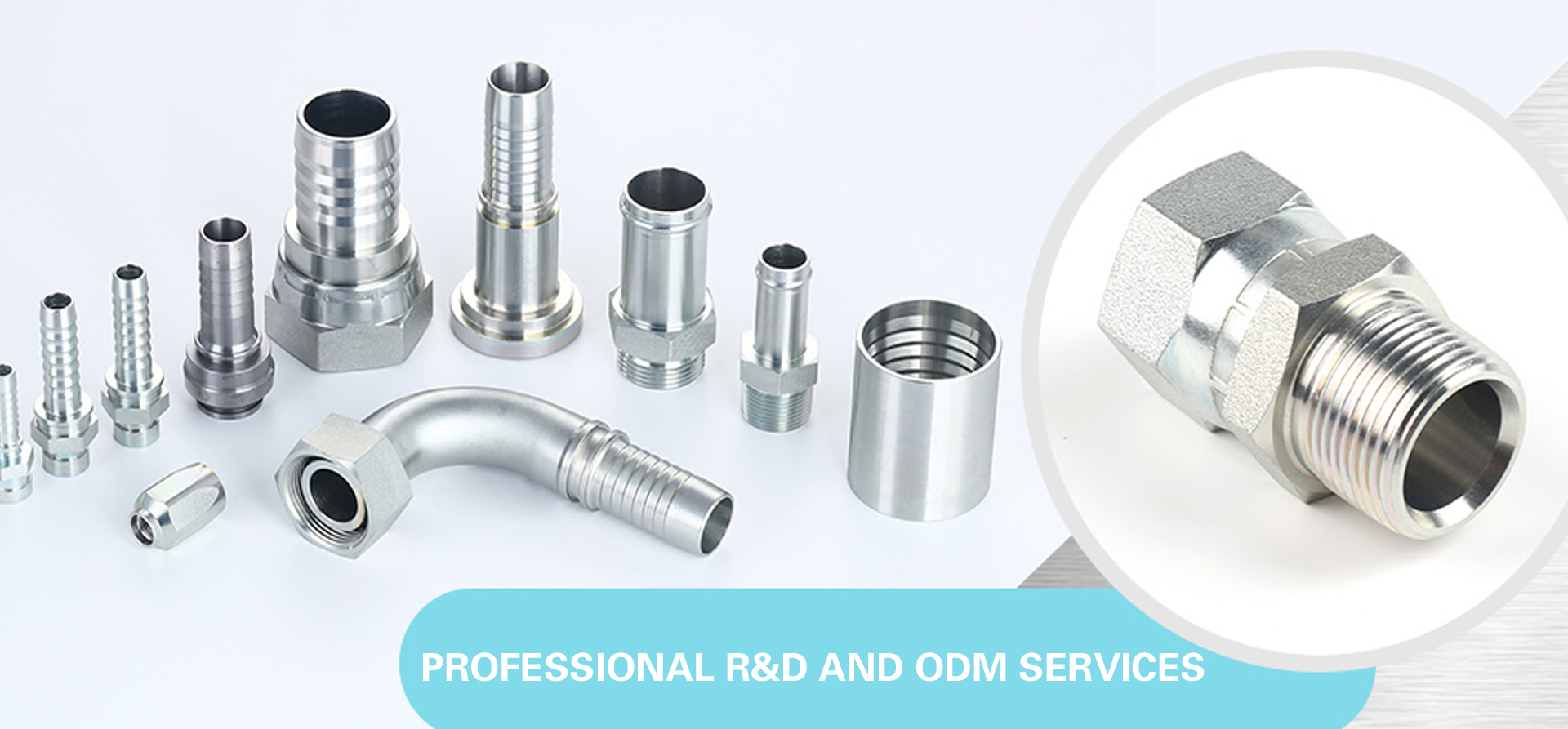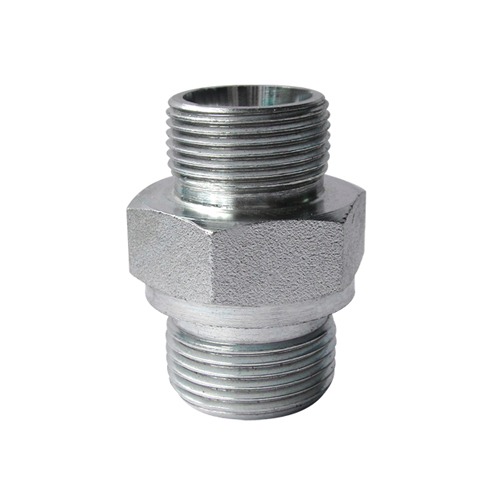Hydraulic systems are the backbone of many industries, including agriculture, construction, and manufacturing. These systems rely on hydraulic fittings to ensure smooth and efficient operation. Tractor supply systems, in particular, require high-quality hydraulic fittings to handle the rugged demands of farming equipment. In this comprehensive guide, we will explore the cost factors, types, and industry trends related to hydraulic fittings for tractor supply systems, with insights provided by HI-TECH. INDUSTRY CO., LIMITED (hereafter referred to as Hoson).
Understanding Hydraulic Fittings and Their Importance
Hydraulic fittings are essential components that connect hoses, pipes, and tubes in a hydraulic system. These fittings help maintain the integrity of the hydraulic system by preventing leaks, ensuring proper pressure levels, and allowing fluid to flow seamlessly. In tractor supply systems, hydraulic fittings are critical for operating equipment such as loaders, plows, and harvesters.

The durability and efficiency of hydraulic fittings directly impact the performance of tractor systems. A failure in these components can lead to system downtime, costly repairs, and reduced productivity. This is why choosing the right hydraulic fittings is paramount for farmers and operators who rely on their equipment for daily operations.
Types of Hydraulic Fittings for Tractor Supply Systems
Hydraulic fittings come in various types, each designed for specific applications and system requirements. Here are some of the most common types:
1. Compression Fittings
Compression fittings are widely used in tractor supply systems due to their ability to create a secure connection without requiring welding or soldering. These fittings are easy to install and are ideal for low to medium-pressure applications.
2. Threaded Fittings
Threaded fittings are another popular choice for hydraulic systems. They feature threads that allow components to be securely screwed together. These fittings are commonly used in high-pressure systems and are available in various thread types, including NPT, BSP, and metric threads.
3. Flare Fittings
Flare fittings are designed to provide a leak-proof connection by flaring the end of a pipe or tube. These fittings are commonly used in high-pressure applications and are known for their reliability and durability.
4. Push-to-Connect Fittings
Push-to-connect fittings are user-friendly and require minimal tools for installation. These fittings are ideal for quick repairs and temporary connections in tractor supply systems.
5. Quick-Disconnect Fittings
Quick-disconnect fittings are designed for applications that require frequent connection and disconnection. These fittings are commonly used in tractor systems for attachments like hydraulic implements and auxiliary equipment.
Factors Influencing the Cost of Hydraulic Fittings
The cost of hydraulic fittings can vary significantly based on several factors. Understanding these factors can help you make informed purchasing decisions:
1. Material
The material used to manufacture hydraulic fittings plays a significant role in determining their cost. Common materials include:
Steel: Durable and suitable for high-pressure applications, but more expensive.
Brass: Corrosion-resistant and affordable, ideal for low-pressure systems.
Stainless Steel: Highly resistant to corrosion and extreme temperatures, often used in harsh environments.
Aluminum: Lightweight and cost-effective, but less durable than steel or stainless steel.
2. Size
The size of the fitting, including its diameter and thread type, can impact its cost. Larger fittings typically cost more due to the additional material required for manufacturing.
3. Pressure Rating
Hydraulic fittings with higher pressure ratings are generally more expensive. These fittings are built to withstand extreme pressures, making them essential for heavy-duty applications.
4. Brand and Manufacturer
Reputable brands like Hoson often charge a premium for their products due to their proven quality and reliability. Investing in high-quality fittings from trusted manufacturers can save you money in the long run by reducing maintenance and replacement costs.
5. Customization
Customized hydraulic fittings designed for specific applications may cost more than standard fittings. However, they offer the advantage of precise compatibility and enhanced performance.
Cost Range for Hydraulic Fittings
The cost of hydraulic fittings can range from a few dollars to several hundred dollars, depending on the factors mentioned above. Here’s a general breakdown:
| Type | Material | Price Range (USD) |
|---|---|---|
| Compression Fittings | Brass | $5 - $20 |
| Threaded Fittings | Steel | $10 - $50 |
| Flare Fittings | Stainless Steel | $20 - $100 |
| Push-to-Connect Fittings | Aluminum | $5 - $15 |
| Quick-Disconnect Fittings | Steel | $30 - $200 |
Industry Trends and Innovations
The hydraulic fittings industry is constantly evolving, driven by advancements in technology and changing market demands. Here are some notable trends:
1. Increased Use of Eco-Friendly Materials
As sustainability becomes a priority, manufacturers like Hoson are exploring eco-friendly materials for hydraulic fittings. These materials reduce environmental impact without compromising performance.
2. Integration of Smart Technology
Smart hydraulic fittings equipped with sensors and monitoring systems are gaining popularity. These fittings provide real-time data on system performance, enabling predictive maintenance and reducing downtime.
3. Focus on Lightweight Designs
Lightweight hydraulic fittings are in demand for applications where weight reduction is crucial, such as in mobile equipment and aerospace systems.
4. Customization and Modular Designs
Manufacturers are offering more customization options to meet the unique needs of their clients. Modular designs allow for easy assembly and disassembly, improving system flexibility.

Choosing the Right Hydraulic Fittings
Selecting the right hydraulic fittings for your tractor supply system involves considering factors such as compatibility, pressure requirements, and environmental conditions. Partnering with a trusted supplier like Hoson ensures access to high-quality fittings and expert guidance.
At Hoson, we understand the critical role hydraulic fittings play in your operations. Our extensive range of fittings is designed to meet the diverse needs of the agricultural and industrial sectors. Contact us today to learn more about our products and services.
Conclusion
Hydraulic fittings are indispensable components of tractor supply systems, ensuring efficient and reliable operation. By understanding the types, cost factors, and industry trends, you can make informed decisions when selecting fittings for your equipment. With a commitment to quality and innovation, Hoson is your trusted partner in achieving optimal hydraulic system performance.
Investing in the right hydraulic fittings not only enhances the efficiency of your tractor systems but also contributes to long-term cost savings and sustainability. Whether you need standard fittings or customized solutions, Hoson has you covered.
Tags:hydraulic fitting,Plumbings,hydraulic check valve,hydraulic globe valve



